Fertilizering Containerized Plants IV
tapla (mid-Michigan, USDA z5b-6a)
12 years ago
Featured Answer
Sort by:Oldest
Comments (332)
mblan13
6 years agowestes Zone 9b California SF Bay
6 years agoRelated Discussions
Fertilizer Program - Containerized Plants (Long Post)
Comments (126)"It looks like you switched to the Dyna grow 9-3-6 last year. Do you still use CRF in your soil mix if you are still using this fert?" Actually, I rarely use the CRFs at all. I like the near complete control the soluble fertilizers give me in containers. I'm pretty diligent about fertilizer applications, so I really don't need the CRFs to cover the 'in case I forget' base, or for any minor elements they might supply. I included them in the soil recipes to make it easier for others. As long as you're faithful to your nutrient supplementation program, you can easily do w.o them. If you think you'll be lax at times, I'd include them. 109 ppm alkalinity is nothing to be overly concerned about with fast container soils. It would be interesting to learn how the Ca and Mg levels are though. Alkalinity is related to pH because alkalinity (practically speaking and for our applications) determines your water's resistance to pH changes. If you have water 'A' at a pH of 9.0 with an alkalinity of 75 mg/L CaCO3, and water 'B', with a pH of 8.0 (a full point lower to begin with) and alkalinity of 300 mg/L CaCO3, it will take about 4 times as much 35% H2SO4 (sulfuric acid) to bring the water with the lower pH down to That aside - your water is better than mine, so I really doubt you'll have Fe/Mn issues if you're using either the 9-3-6 or MG. I will say though, that bark/peat soils have a potentially high Fe:Mn ratio, so applying Fe w/o Mn could easily create a deficiency of Mn. If I were in your shoes, I would do nothing until I actually saw evidence of an Fe deficiency. Then, I would acidify. Oh - the other likely cause of an Fe deficiency is too much P, which combines with the Fe to form an insoluble precipitate, so avoid the high P fertilizers - they are useless unless you are using them to supply the exact amount of P needed while intentionally (severely) limiting N. I used this strategy last year: I fertilized with regular dosages of 9-3-6 until the plants were well established. I then cut way back on the dosage and added ProTeKt to the solution. I rather like to envision that I used the added K (and got the benefit of the added silicon) to change the fertilizer ratio to 3:1:3 from a 3:1:2. This allowed me to reduce the dosage of N (reducing vegetative growth) while still having adequate P and K. Take care. Al...See MoreJobes Organics Vegetable and Tomato Fertilizer Help
Comments (26)I am not sure where you are getting your info from but it is not precisely correct. "In general, fertilizers formulated for flowering and fruiting plants would contain amounts of nitrogen less than or equal to the amounts of phosphorus (i.e. 10-10-10 or 5-10-15) This is because phosphorus encourages flowering and fruiting. Too much nitrogen will stimulate leafy green growth at the expense of flowers and fruit production. (emphasis mine) Also, the recommendations are made for granular fertilizer formulations. These will generally supply nutrients to the plants for about 6-8 weeks. During periods of frequent rainfall or frequent irrigation, the nutrients can be leached out of the soil and fertilizer may need to be reapplied." "A common recommendation for vegetables is to apply 1 pound of a 10-10-10 fertilizer or 2 pounds of a 5-10-5 (or 5-10-10) fertilizer per 100 feet of row. The first number is the percentage by weight of nitrogen, the second the percentage by weight of phosphorus and the third number is the percentage by weight of potassium in the fertilizer product. Thus, 100 pounds of a 5-10-10 fertilizer contains 5 pounds of nitrogen, 10 pounds of phosphorus and 10 pounds of potassium. As already mentioned, applying nutrients not needed can cause problems with the vegetables you are growing. When an excess amount of nitrogen is applied to fruit crops such as tomatoes and squash, it is common to have all vines and no fruit. With corn, missing a nitrogen fertilizer application as the corn starts to tassel can result in poor ear production. When excessive amounts of nitrogen are applied to root crops such as turnip, carrot and parsnips, you may end up with many leaves and small roots." (emphasis mine) Both of these statements come directly form extension service publications, which were initially established to assist home gardeners. The same information will be contained in virtually any other vegetable growing resource. It is a widely accepted and common horticultural convention...See Morehelp me grow fruit plants in pots
Comments (6)You'll find some very, very helpful information in these two threads from the container forum: Container Soils - Water Movement and Retention XVIII Fertilizering Containerized Plants IV Although they discuss containerized plants in general (rather than just fruits), most if not all of the information is applicable to growing fruits in pots. As to some of your specific questions... "My question is once they start growing big are the nutrients in the pot soil is sufficient for the plants?" No. Given the tight confines of pots and the limited soil volume, microbe activity, etc. you absolutely need to provide supplemental fertilization. In my experience, you'll get more reliable results with a synthetic fertilizer, but that's another discussion entirely. "I can change the soil, but am I not going to disturb the roots?" Disturbing the roots isn't necessarily a bad thing. In fact, as you'll see in the linked threads above, periodically disturbing the roots (root pruning, etc.) will enhance the vitality of your plants....See MoreConfused about fertilizing indoor plants
Comments (8)First, you're correct in thinking that half as much 20-20-20 will yield a solution the same as 10-10-10 (if it was soluble). Another way of saying it is, 1 tsp of 20-20-20 in a gallon of water yields a solution of the same strength as 2 tsp of 10-10-10 in a gallon of water. Generally though, 10-10-10 formulations are slow release, which is different from controlled release, and 20-20-20 formulas are usually soluble in water. While you wouldn't normally mix 10-10-10 in water, it does contain half the N, P, and K that 20-20-20 contains. A lot of growers are quick to recommend a fertilizer with a specific NPK %, but most are unable to tell you precisely why they recommend it. Often, they will offer the idea that fertilizers with a higher first number (nitrogen) are too high in nitrogen to be suitable for houseplants; but they overlook the fact that the amount of nitrogen supplied has nothing to do with the fertilizer ratio, and everything to do with how much N is supplied by the grower. It's as easy to oversupply nitrogen with 10-10-10 as it is with 24-8-16. Actually though, the consequences of oversupplying nitrogen when using 1:1:1 ratio fertilizers like 10-10-10 or 20-20-20 are considerably more severe because you can't even supply an ADEQUATE measure of nitrogen (using 1:1:1 ratios) with out oversupplying both phosphorous and potassium. The perfect fertilizer program would find the grower providing all the nutrients essential to normal growth in the exact ratio at which the plant uses the nutrients, and at a concentration neither so dilute that deficiencies are limiting nor so concentrated that toxicity or antagonistic deficiencies are limiting. It's actually impossible to come even close to achieving that end when using a 1:1:1 ratio fertilizer, or fertilizers actually providing more than 1/6 as much P as N. After the factoring is done for the fact that P and K are actually reported as P2O5 and K2O in a fertilizers NPK %s, you'll find that fertilizers with 3:1:2 ratios (24-8-16, 12-4-8, 9-3-6 are examples of 3:1:2 ratio fertilizers) supply nutrients in almost exactly the same ratio as the average at which plants use therm. There is a significant variance in the overall volume of nutrients taken up by plants, but only a small variance in the ratio the plants actually use. I grow hundreds of species of plants, indoors and outdoors. I formerly used Miracle-Gro 24-8-16 or 12-4-8, to which I added other nutrients. I now use Foliage-Pro 9-3-6 for every plant I grow. It contains all the essential nutrients in a very favorable ratio. It also gets none of its N from urea, which helps to minimize the impact of low light and helps keep houseplants compact. I know that all sounds complicated to a beginner, but if you have questions, don't be afraid to voice them. Al This post was edited by tapla on Tue, Sep 24, 13 at 9:08...See Moretapla (mid-Michigan, USDA z5b-6a)
6 years agoewwmayo
6 years agolast modified: 6 years agowestes Zone 9b California SF Bay
6 years agomblan13
6 years agofour (9B near 9A)
6 years agowestes Zone 9b California SF Bay
6 years agowestes Zone 9b California SF Bay
6 years agoewwmayo
6 years agowestes Zone 9b California SF Bay
6 years agoewwmayo
6 years agomblan13
6 years agoConrad Todd
5 years agoConrad Todd
5 years agoedweather USDA 9a, HZ 9, Sunset 28
5 years agoConrad Todd
5 years agostephaniedan
3 years agolast modified: 3 years agotapla (mid-Michigan, USDA z5b-6a) thanked stephaniedantropicofcancer (6b SW-PA)
3 years agotapla (mid-Michigan, USDA z5b-6a) thanked tropicofcancer (6b SW-PA)tropicofcancer (6b SW-PA)
3 years agotapla (mid-Michigan, USDA z5b-6a) thanked tropicofcancer (6b SW-PA)RoseMe SD
2 years agofour (9B near 9A)
2 years agolast modified: 2 years agolitterbuggy (z7b, Utah)
2 years agolast modified: 2 years agotapla (mid-Michigan, USDA z5b-6a)
2 years agoRoseMe SD
2 years agolast modified: 2 years agofour (9B near 9A)
2 years agolast modified: 2 years agotapla (mid-Michigan, USDA z5b-6a)
2 years agolast modified: 2 years agofour (9B near 9A)
2 years agoRoseMe SD
2 years agogardengal48 (PNW Z8/9)
2 years agoMeyermike(Zone 6a Ma.)
2 years agolast modified: 2 years agotapla (mid-Michigan, USDA z5b-6a)
2 years agolast modified: 2 years agotapla (mid-Michigan, USDA z5b-6a)
2 years agofour (9B near 9A)
2 years agoMeyermike(Zone 6a Ma.)
last yearseasiderooftop
last yearfour (9B near 9A)
last yearMeyermike(Zone 6a Ma.)
last yearlast modified: last yearMichele Rossi
9 months agofour (9B near 9A)
9 months agoMichele Rossi
9 months agolast modified: 9 months agofour (9B near 9A)
9 months agoMichele Rossi
9 months agofour (9B near 9A)
9 months agoLoveplants2 8b Virginia Beach, Virginia
9 months agotapla (mid-Michigan, USDA z5b-6a) thanked Loveplants2 8b Virginia Beach, VirginiaLoveplants2 8b Virginia Beach, Virginia
9 months agolast modified: 9 months ago
Related Stories

GARDENING GUIDESGreat Design Plant: Grow Blueberries for Their Fruit and More
Eastern gardeners should consider growing blueberry plants for their delicious fruits, bee-friendly spring blooms and brilliant fall foliage
Full Story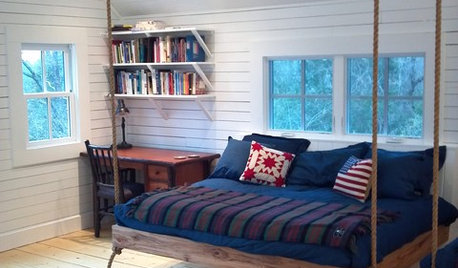
DECORATING GUIDESHemp, Hemp, Hooray! This Superplant May Be Legal Again in the USA
Hemp products are durable, sustainable, antibacterial and much more. Will the plant finally get the status it’s due in the States?
Full Story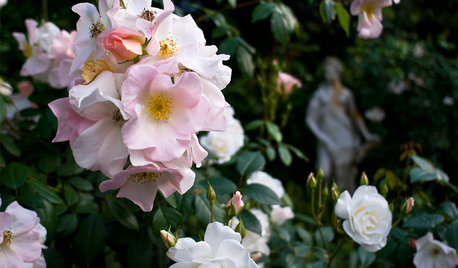
WINTER GARDENINGPruning Secrets for Exquisite Roses
Encourage gorgeous blooms year after year with this time-tested advice on how to prune your rosebush in winter for health and shape
Full Story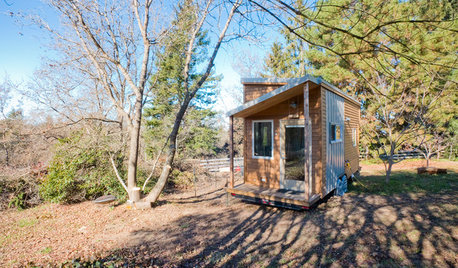
SMALL HOMESHouzz Tour: Rolling With Simplicity in a Tiny House on Wheels
Just 240 square feet, this California home encourages efficient living — but there’s still room for yoga
Full StorySponsored
Custom Craftsmanship & Construction Solutions in Franklin County



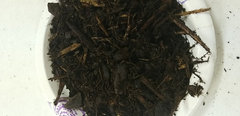
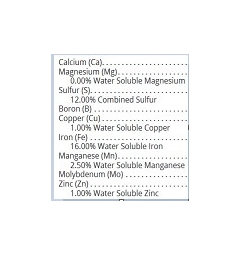

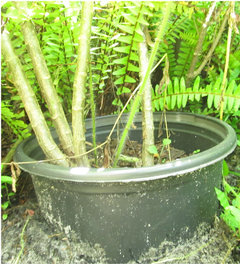
tropicofcancer (6b SW-PA)